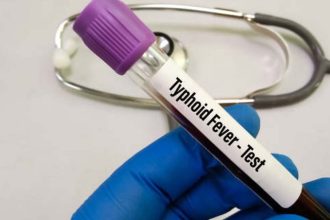The housefly (Musca domestica) is the most prevalent insect found in human environments. While it may appear harmless, this insect poses a significant threat to our health, particularly in regions with poor sanitation. Understanding the biology and behavior of houseflies is crucial for mitigating their impact on public health.
Physical Characteristics of the Housefly
Houseflies have a light brown, hairy body that typically measures around 7 mm in length. One of their most distinctive features is their two prominent red eyes. Unlike many other insects, houseflies do not have biting mouthparts. Instead, their mouths consist of two spongy pads designed for a unique method of feeding. This feeding process involves depositing saliva and digestive juices onto food surfaces to break down nutrients, which the fly then sucks up in liquid form. Unfortunately, this feeding mechanism also introduces a host of germs, as flies often carry pathogens in their saliva, contaminating the food and posing health risks to humans.
The Health Risks of Houseflies
Houseflies are notorious carriers of various diseases. The germs they transfer to food can lead to severe health issues, resulting in thousands of fatalities annually. Common diseases associated with houseflies include typhoid, tuberculosis, and cholera. These insects often pick up pathogens from unsanitary environments, such as garbage and sewage, and subsequently transfer them to the food we consume. Understanding these risks highlights the importance of proper sanitation and food safety practices.
How Houseflies Contaminate Food
To ward off houseflies, many people instinctively rub their legs together. This behavior is a natural response to keep flies at bay, but it also serves an important purpose for the flies themselves. Houseflies are equipped with numerous fine hairs covering their bodies, including their jaws and padded feet. Additionally, their tongues are coated with a sticky substance, aiding in food collection. During their cleaning process, flies inadvertently transfer dirt and germs from their bodies onto our food, increasing the risk of illness. This transmission of disease-causing germs emphasizes the need for vigilance in food handling and hygiene.
Breeding Habits of Houseflies
Houseflies thrive in unsanitary conditions, often laying eggs in garbage and toilets. A female housefly can lay up to 100 eggs at a time, totaling around 1,000 eggs throughout her lifespan. These eggs typically hatch into larvae within 12 to 30 hours, which then undergo several stages of development before forming pupae. The pupation process occurs within a few days, allowing the life cycle of the housefly to continue. In warmer months, houseflies generally live for about 30 days, while cooler temperatures can extend their lifespan slightly. However, cold weather can kill adult flies, although the larvae and pupae often survive, ready to emerge when conditions improve.
Addressing the Housefly Threat
Given the significant health risks posed by houseflies, it is essential to take proactive measures to reduce their populations. Maintaining proper sanitation, sealing food containers, and implementing pest control measures can help mitigate the dangers associated with these common insects. By understanding the biology and behavior of houseflies, we can better protect ourselves and our communities from the diseases they carry.




